Norfolk, VA Pollen and Allergy Report for Summer 2023
Pollen Allergy Trends in Norfolk, VA
When is pollen lowest in Norfolk, VA?

February
Lowest month total PPM
Avg. PPM
When is pollen highest in Norfolk, VA?

April
Highest month total PPM
Avg. PPM
How does pollen in Norfolk, VA compare to Virginia?
Norfolk has a lower average PPM than the state of Virginia.
Norfolk yearly avg PPM:
Virginia yearly avg PPM:
How does pollen in Norfolk, VA compare to the USA?
Norfolk has a higher average PPM than the USA.
Norfolk yearly avg PPM:
USA yearly avg PPM:
Is pollen worse this year in Norfolk, VA?
Spring 2023 was worse than spring 2022.
Spring 2023 PPM:
Spring 2022 PPM:
Average PPM in Norfolk, VA
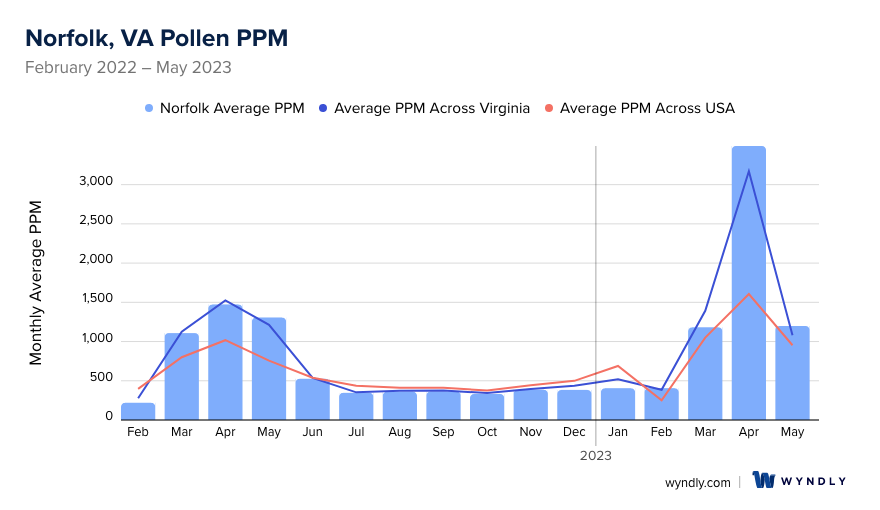

Norfolk, VA Pollen and Allergy Breakdown by Month
Grass
When is grass pollen highest in Norfolk, VA?
April has the highest grass pollen in Norfolk, VA with an average PPM of
When is grass pollen lowest in Norfolk, VA?
December has the lowest grass pollen in Norfolk, VA with an average PPM of
Tree
When is tree pollen highest in Norfolk, VA?
April has the highest tree pollen in Norfolk, VA with an average PPM of
When is tree pollen lowest in Norfolk, VA?
October has the lowest tree pollen in Norfolk, VA with an average PPM of
Weed
When is weed pollen highest in Norfolk, VA?
April has the highest weed pollen in Norfolk, VA with an average PPM of
When is weed pollen lowest in Norfolk, VA?
February has the lowest weed pollen in Norfolk, VA with an average PPM of
Norfolk, VA Pollen Monthly Breakdown by Pollen Type
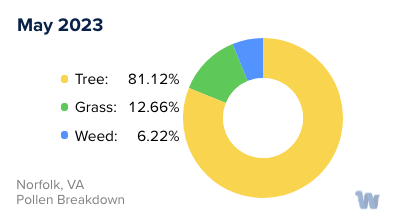
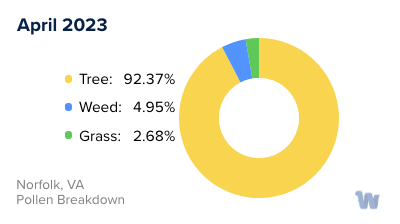
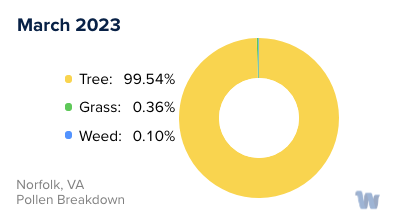
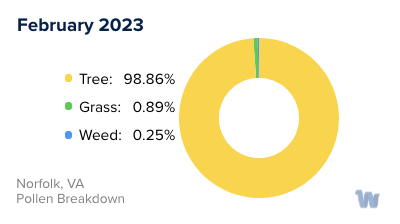
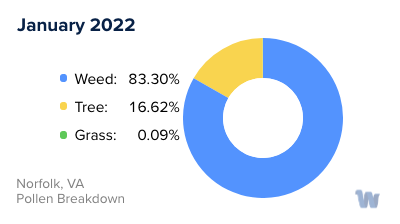
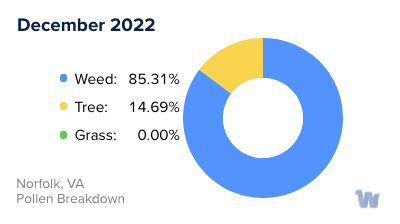
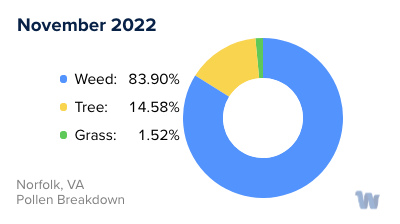
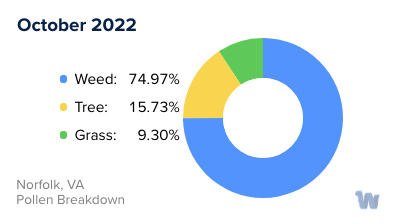
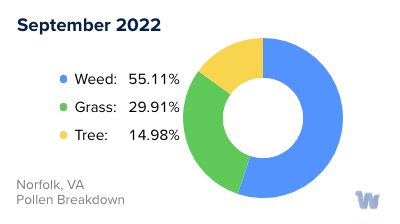
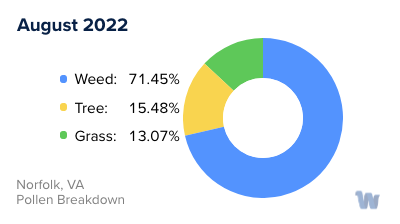
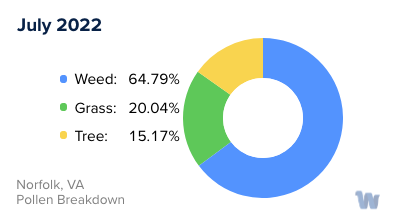
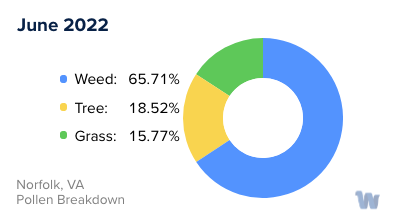
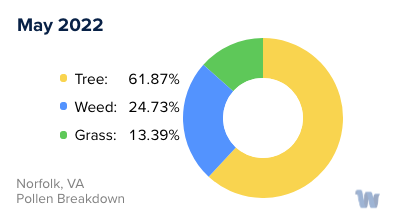
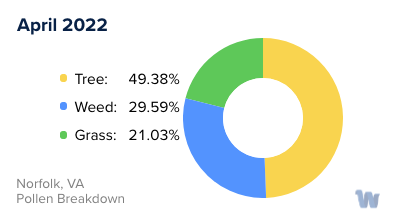
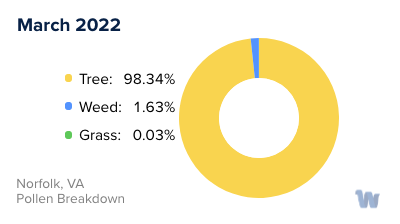

Pollen and Hay Fever in Norfolk, VA
Pollen allergies, often known as hay fever, are a prevalent concern for many residents in Norfolk, Virginia. These allergies are typically triggered by the pollen released from various types of plants throughout different seasons of the year.
In Norfolk, the diversity of flora is responsible for a broad spectrum of pollen types, each presenting a unique set of challenges for allergy sufferers. There are three primary types of pollen that affect the residents: tree pollen, grass pollen, and weed pollen.
Tree pollen is typically the first allergen to appear each year, marking the start of the allergy season. In Norfolk, the trees that often contribute to these allergies include oak, pine, and maple. These trees begin to release their pollen as early as late winter or early spring, marking the beginning of what can be a long and challenging season for those with pollen allergies.
As spring transitions into summer, grass pollen takes center stage. The common grasses in Norfolk, such as Bermuda grass and Kentucky bluegrass, release their pollen during this time. Warm, dry, and windy days can exacerbate these allergies as the conditions are ideal for the transport of grass pollen.
Weed pollen, the third and final allergen type, tends to be most problematic in late summer and fall. Ragweed, a significant contributor to hay fever, is particularly troublesome in Norfolk. Other weed pollens, such as those from lamb's quarters and sagebrush, also play a role in the autumn allergy season.
In a place like Norfolk, with its vast array of plant life, understanding the types of pollen and their seasons can be crucial. By recognizing the patterns and timing of pollen release, individuals can better anticipate and manage their allergy symptoms, even though this understanding doesn't remove the discomfort entirely.
While the beauty of Norfolk's diverse flora is undeniable, it's important to remember that this same diversity can also be a source of discomfort for those with pollen allergies. It's a clear reminder that even in the most beautiful of cities, nature can have a double-edged sword.


